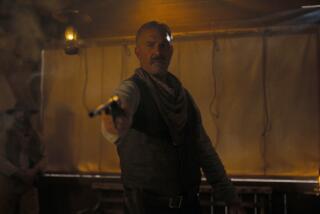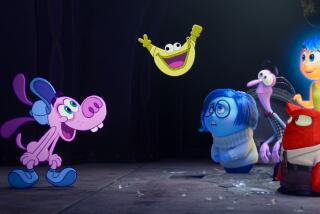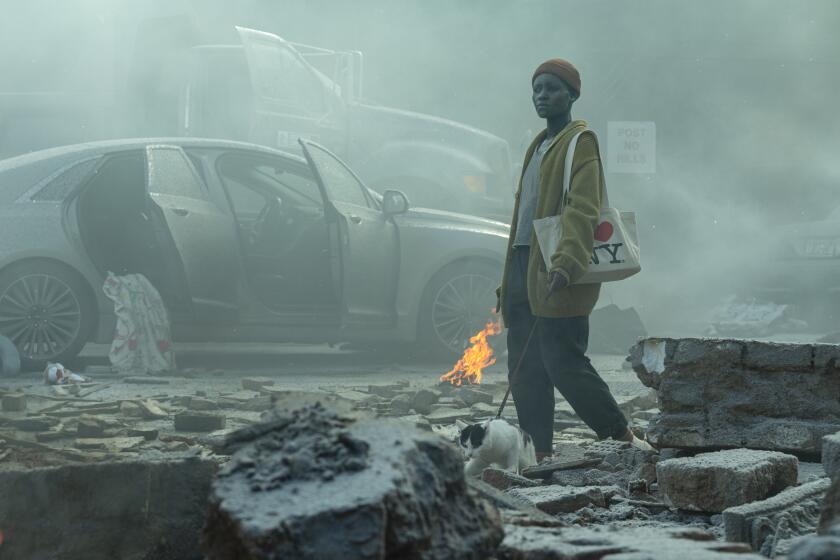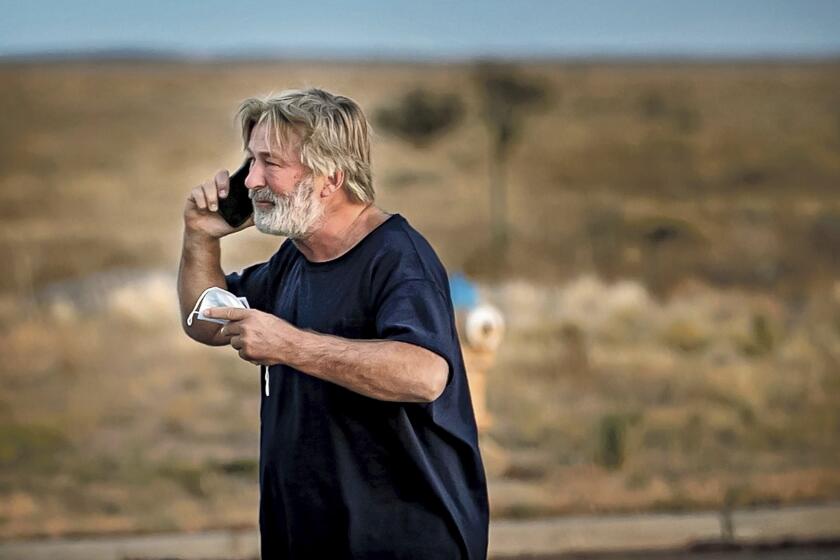A long way from Disney
Anyone who thinks that animation is kid stuff will be surprised how well it suits the dark themes of “A Scanner Darkly,” Richard Linklater’s film of Philip K. Dick’s novel about drug users, narcs and their suspicion of one another. But then, the movie doesn’t exactly use Disney-style animation techniques.
Like “Waking Life,” Linklater’s 2001 animated movie about a dreamer stuck asleep, “Scanner” is digitally rotoscoped, a process in which animators draw over a live-action film with help from a computer program. The end result looks less polished than most cartoons, with a jagged quality that gives it a kinetic look. The backgrounds vibrate subtly and the characters appear jittery, giving the entire movie a vaguely hallucinatory quality that fits well with its subject matter.
“It was the only way to do a faithful adaptation,” said Linklater, the Austin, Texas, director known for his slice-of-life movies “Slacker” and “Dazed and Confused.” “I could stay true to the tone, especially the humor.”
“Scanner,” which opens today, is also true to the more unsettling qualities of Dick’s novel of the same name, which features a drug-damaged main character with a split personality who believes people are out to get him and, as it happens, turns out to be right.
“There’s a moving painting quality,” Linklater said of the rotoscoping.
“Scanner” was drawn with Rotoshop, a proprietary computer program developed by Bob Sabiston that allows animators to save labor by interpolating computer-generated lines among those drawn on the film by hand.
“It’s a huge time savings over having to do every line on every frame yourself,” Sabiston said. “You still have to draw much of it by hand, but this assists you.”
The non-computer-assisted process of rotoscoping precedes Disney’s 1937 “Snow White and the Seven Dwarfs” and has been used sporadically in projects since then, perhaps most memorably in the A-ha music video “Take On Me” in the mid-’80s. But Sabiston’s program, which was also used to create “Waking Life,” makes the process much less time-consuming -- and hence less expensive -- and gives it a stylized look. Sabiston, who began developing his program in 1997, first used it to create animated interstitial segments for MTV.
Ironically, the same animation process that brought to life Linklater’s dystopian vision and the at-the-time hip MTV segments has also been used to make the new television commercials for staid broker Charles Schwab that feature considerably more conservative-looking men voicing considerably more conservative sentiments about financial services.
Even though the figures on screen aren’t saying anything out of the ordinary investment-speak, the off-kilter look of the animation focuses a viewer’s attention on what they’re saying. As the writer Seth Stevenson said on Slate.com, “washing out the real-world details present in a live actor’s face, and in an actual background set, lets us move past what we’re seeing and shifts our attention onto the dialogue.”
It’s a process that, from the director’s perspective, must feel like making the film twice. In mid-2004, Linklater shot a live-action film on digital video with Keanu Reeves, Robert Downey Jr., Woody Harrelson and Winona Ryder. He finished in about a month, partly because he didn’t have to sweat the small stuff.
“If there was a light stand in the shot, we could just say, ‘Don’t animate that,’ ” said Shane F. Kelly, the director of photography. “It was very freeing.”
Then Linklater and his producers hired a team of animators to redraw the film, sketching the scenes in a stylized manner that owes more to the visuals of a graphic novel than to those of most animated films.
When that process began, in October 2004, Linklater and co-producer Tommy Pallotta believed that a team of 30 animators could finish the film in about six months for a budget of $6.7 million.
In the end, completing “Scanner” required up to 50 animators, took more than twice the time allotted and cost more than $8 million.
“It was very difficult,” Linklater said. “It still takes about 500 hours of human labor to do a minute of film.”
The production ran into a few other difficulties as well. Sabiston had been hired to head the animation effort on “Scanner,” as he had done on “Waking Life.” But by the end of 2004, the film’s producers became concerned that his team wasn’t progressing as fast as they had hoped.
The producers had based their schedule on that of “Waking Life,” said Katy O’Connor, then the film’s lead animator. That was unrealistic for “Scanner,” which called for a more uniform visual style, used twice as many frames per second, and featured more complex shots with more camera movement, more action and richer backgrounds.
“The producers may have undersold how hard it would be to make,” O’Connor said.
Ultimately, Sabiston and his animation team left the project, and the film was finished with different staff.
Sabiston went on to create the Schwab ads and is now looking for a studio for his next project, “Fuzzy Town,” which he calls an “animated absurdist comedy.” He hasn’t licensed his Rotoshop software for use on any other major films.
“If we’re the only people who can do this,” Sabiston said, “it’s probably a better thing than letting a lot of other people do it and having more money.”
More to Read
Only good movies
Get the Indie Focus newsletter, Mark Olsen's weekly guide to the world of cinema.
You may occasionally receive promotional content from the Los Angeles Times.






